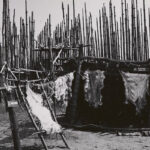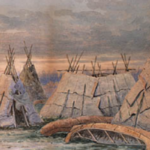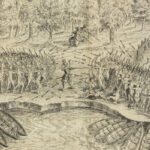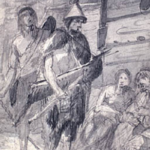Six Nations of the Grand River: A Legacy of Unity, Diplomacy, and Resilience
The Six Nations of the Grand River, located in southern Ontario along the Grand River, is one of the most historically significant Indigenous communities in Canada. As the largest First Nations reserve by population in the country, it represents the rich cultural traditions and political legacy of the Haudenosaunee Confederacy (Iroquois Confederacy), which includes the Mohawk, Oneida, Onondaga, Cayuga, Seneca, and Tuscarora nations. With roots stretching back centuries, the Six Nations of the Grand River have been central to shaping North America’s history, from their ancient governance systems to their vital roles in colonial conflicts and treaty-making.
Ancient Origins: The Haudenosaunee Confederacy
The Six Nations’ history begins long before European contact, with the formation of the Haudenosaunee Confederacy (translated as the “People of the Longhouse”) in what is now the northeastern United States. The confederacy, established between 1,000 and 1,500 years ago, was founded on the principles of peace, unity, and cooperation under the Great Law of Peace (Kaianere’kó:wa), a sophisticated constitution that predates European systems of governance.
The confederacy originally consisted of five nations—Mohawk, Oneida, Onondaga, Cayuga, and Seneca—before the Tuscarora joined in the early 18th century. Each nation had distinct roles within the confederacy, with the Mohawk as “keepers of the eastern door” and the Seneca as “keepers of the western door.” The Onondaga served as the central firekeepers, symbolizing the unity of the Haudenosaunee.
Anthropologist William N. Fenton, in The Great Law and the Longhouse: A Political History of the Iroquois Confederacy, writes, “The Haudenosaunee Confederacy was one of the most remarkable political structures in pre-contact North America, offering a model of democracy and consensus-based governance that influenced the development of modern political systems.”
Governance and Social Structure
The Six Nations followed a matrilineal system of kinship, with clan mothers holding significant power in selecting leaders and guiding decision-making processes. Chiefs served as representatives in the Grand Council, where decisions were made collectively to ensure the well-being of all nations. This governance model was deeply tied to Haudenosaunee values of balance, respect, and reciprocity.
Ceremonies, such as the Condolence Ceremony, reinforced the confederacy’s unity and spiritual connection. The Haudenosaunee worldview emphasized harmony with nature and the interconnectedness of all living beings, principles that continue to guide the Six Nations today.
The Role of the Six Nations in Colonial Conflicts
The arrival of Europeans in the 17th century brought profound changes to the Haudenosaunee way of life. The confederacy became a dominant power in the fur trade, leveraging their strategic location and alliances with both the French and the British. However, the colonists’ encroachment on Haudenosaunee lands led to conflicts such as the Beaver Wars (1640s–1680s), during which the Haudenosaunee defended their territory and expanded their influence.
The Six Nations played a pivotal role in the American Revolutionary War (1775–1783). The confederacy was divided, with some nations, including the Mohawk led by Joseph Brant (Thayendanegea), siding with the British, while others supported the American revolutionaries. After the war, the British ceded Haudenosaunee lands in the United States to the Americans without consultation, forcing many Haudenosaunee to seek refuge in Canada.
Historian Colin G. Calloway, in The American Revolution in Indian Country, writes, “The Haudenosaunee Confederacy faced immense challenges during the Revolutionary War, yet their political and military strategies demonstrated their resilience and adaptability.”
The Haldimand Proclamation and Settlement at Grand River
In 1784, following the Revolutionary War, the British issued the Haldimand Proclamation, granting the Six Nations a tract of land along the Grand River as compensation for their loyalty during the war. This land stretched six miles on either side of the river from its source to its mouth, encompassing approximately 950,000 acres. The Six Nations, led by Joseph Brant, established a new home along the Grand River.
However, the settlement at Grand River was not without challenges. Over time, large portions of the land were sold or appropriated by settlers and the colonial government, leaving the Six Nations with only a fraction of their original territory. The loss of land has remained a central issue for the community, shaping their advocacy for treaty rights and land reclamation.
Resilience Through Colonization
Throughout the 19th and 20th centuries, the Six Nations faced systemic efforts to assimilate Indigenous peoples into Euro-Canadian society. Residential schools, restrictive legislation under the Indian Act, and the imposition of elected band councils disrupted traditional governance and cultural practices. Despite these challenges, the Six Nations preserved their identity through ceremonies, language, and resistance to colonial policies.
The community has also played a key role in advocating for Indigenous rights. The Six Nations were instrumental in the founding of the League of Indians of Canada in 1919, an early Indigenous political organization led by Frederick Ogilvie Loft.
Cultural and Political Revitalization
In recent decades, the Six Nations of the Grand River have experienced a resurgence of cultural pride and political activism. Efforts to preserve the Haudenosaunee languages—including Mohawk, Cayuga, and Onondaga—have been supported by language immersion programs and cultural education initiatives.
The Six Nations have also taken significant steps to assert their sovereignty. The traditional governance system, represented by the Haudenosaunee Confederacy Chiefs Council, operates alongside the elected band council established under the Indian Act, reflecting the community’s commitment to self-determination.
Chief Ava Hill, a former elected leader, emphasized in a 2018 interview with CBC News, “Our people have always been strong and united. Our resilience comes from our connection to our land, our laws, and the Great Law of Peace.”
Environmental Stewardship
The Six Nations of the Grand River have long been stewards of the land and waterways surrounding their community. Traditional ecological knowledge informs sustainable practices in agriculture, forestry, and water management. The community has partnered with environmental organizations to protect the Grand River ecosystem and promote renewable energy initiatives.
Historian Cole Harris, in The Resettlement of British Columbia, writes, “The environmental stewardship of the Haudenosaunee reflects their deep cultural and spiritual relationship with the land.”
Six Nations of the Grand River Today
Today, the Six Nations of the Grand River is a thriving community with a population of over 27,000 members, making it the largest First Nations reserve in Canada. The community blends traditional practices with modern governance and economic development. Investments in education, healthcare, and infrastructure underscore their commitment to sustainability and well-being.
Cultural events, such as the Grand River Champion of Champions Powwow, celebrate Haudenosaunee heritage and provide opportunities for cultural exchange and education. These gatherings reinforce the community’s pride and resilience while fostering unity and reconciliation.
Conclusion: A Legacy of Unity and Renewal
The Six Nations of the Grand River embody the enduring strength and adaptability of the Haudenosaunee Confederacy. From their ancient governance systems and strategic diplomacy to their modern efforts in cultural revitalization and land reclamation, the Six Nations have remained steadfast in their commitment to preserving their identity and place within Canada’s evolving landscape.
As Chief Ava Hill stated, “Our history is one of resilience, unity, and determination. We honour our ancestors by continuing to fight for our land, our rights, and our future.”
References
- Fenton, William N. The Great Law and the Longhouse: A Political History of the Iroquois Confederacy. University of Oklahoma Press, 1998.
- Calloway, Colin G. The American Revolution in Indian Country: Crisis and Diversity in Native American Communities. Cambridge University Press, 1995.
- Trigger, Bruce G. Indigenous Peoples of Canada. McGill-Queen’s University Press, 1992.
- Harris, Cole. The Resettlement of British Columbia: Essays on Colonialism and Geographical Change. UBC Press, 1997.
- Conrad, Margaret. A Concise History of Canada. Cambridge University Press, 2012.
- Hill, Ava. “Sovereignty and Unity: The Future of Six Nations.” CBC News, 2018.
- Six Nations of the Grand River. Guardians of the Grand: The History and Culture of Six Nations. Six Nations Publications, 2015.
- Johnston, Basil. The Sacred Tree: Reflections on Native American Spirituality. Lotus Press, 1984.
- Treaty Elders of Ontario. Voices of the Confederacy: Oral Histories of Haudenosaunee Leaders. University of Toronto Press, 2000.
- Ridington, Robin. Trail to Heaven: Knowledge and Narrative in a Northern Native Community. Douglas & McIntyre, 1988.



